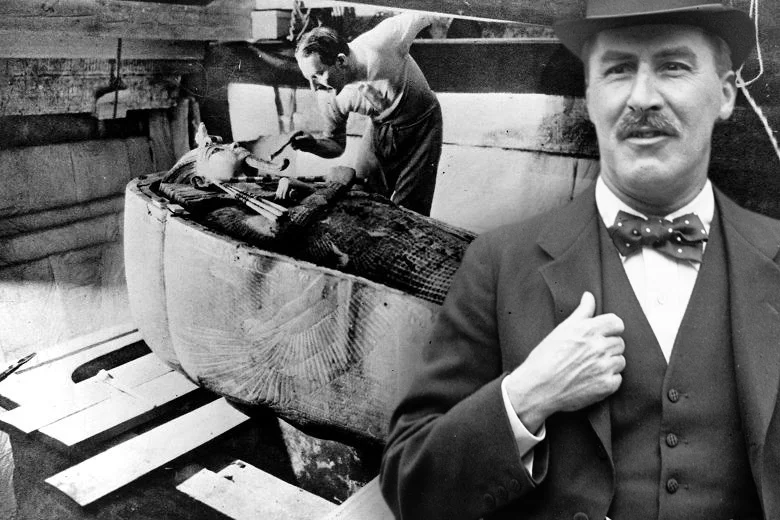Howard Carter, one of the most famous archaeologists in history, is best known for his groundbreaking discovery of the tomb of the ancient Egyptian pharaoh Tutankhamun in 1922. His work in Egypt not only changed the field of archaeology but also brought global attention to Egypt’s rich ancient civilization. This article explores the life of Howard Carter, his career, and his remarkable legacy in Egypt.
Early Life and Career
Howard Carter was born on May 9, 1874, in London, England. From a young age, Carter showed an interest in art and antiquities. His father, Samuel Carter, was a talented artist who specialized in painting natural history scenes. This early exposure to art and illustration helped Carter develop the skills that would later serve him well in documenting ancient artifacts.
At the age of 17, Carter moved to Egypt in 1891, where he found employment under the British Egyptologist Sir Flinders Petrie. Initially, Carter worked as an artist, sketching and documenting the archaeological findings from excavations in Egypt. His talent for drawing and attention to detail caught the eye of leading archaeologists, and soon he was promoted to excavation duties.
Carter’s Work in Egypt
Carter’s early career in Egypt involved various excavations and archaeological projects, but it wasn’t until he began working with the renowned Egyptologist Lord Carnarvon that his path toward discovering Tutankhamun’s tomb truly began. In 1907, Carter was appointed as the chief inspector of Egyptian antiquities in the Valley of the Kings, a royal burial ground in Luxor where many New Kingdom pharaohs were entombed.
During his work in the Valley of the Kings, Carter conducted several excavations, but none of his early efforts resulted in significant discoveries. However, Carter was persistent and focused on finding the tomb of a largely unknown pharaoh, Tutankhamun, whose tomb had never been located despite numerous attempts.
The Discovery of Tutankhamun’s Tomb
Carter’s persistence paid off in November 1922, when he discovered the tomb of Tutankhamun (KV62) in the Valley of the Kings. Funded by Lord Carnarvon, Carter had spent years searching for the tomb of the “boy king,” whose reign had been largely forgotten by history until this discovery.
After a long period of careful excavation, Carter’s team unearthed a set of steps leading to a sealed entrance. Inside the tomb, they discovered treasures, gold artifacts, and a wealth of objects that had been preserved for over 3,000 years. The most famous artifact found in the tomb was Tutankhamun’s golden burial mask, which remains one of the most iconic symbols of ancient Egypt.
The discovery of the tomb was a momentous event in the field of archaeology, as it provided an unprecedented glimpse into the life and death of a young pharaoh who had died at an early age, likely around 18 or 19. The tomb’s contents were of immense historical value, offering rare insights into Egyptian burial practices, art, and daily life during the 18th Dynasty.
Controversy and the Curse of the Pharaoh
While the discovery of Tutankhamun’s tomb brought Carter international fame, it also stirred controversy and led to the infamous “Curse of the Pharaohs.” Following Lord Carnarvon’s death shortly after the tomb’s opening, rumors spread that those who entered the tomb were cursed. Several other individuals involved in the excavation also died under mysterious circumstances, fueling media speculation and public fascination with the supposed curse. However, many scholars believe that the deaths were coincidental, and there is no scientific evidence to support the idea of a curse.
Despite the controversy, Carter remained focused on his work. He carefully documented and cataloged the many artifacts found in the tomb, a monumental task that took several years to complete. Carter’s meticulous approach to excavation and documentation set a new standard for archaeological practices.




